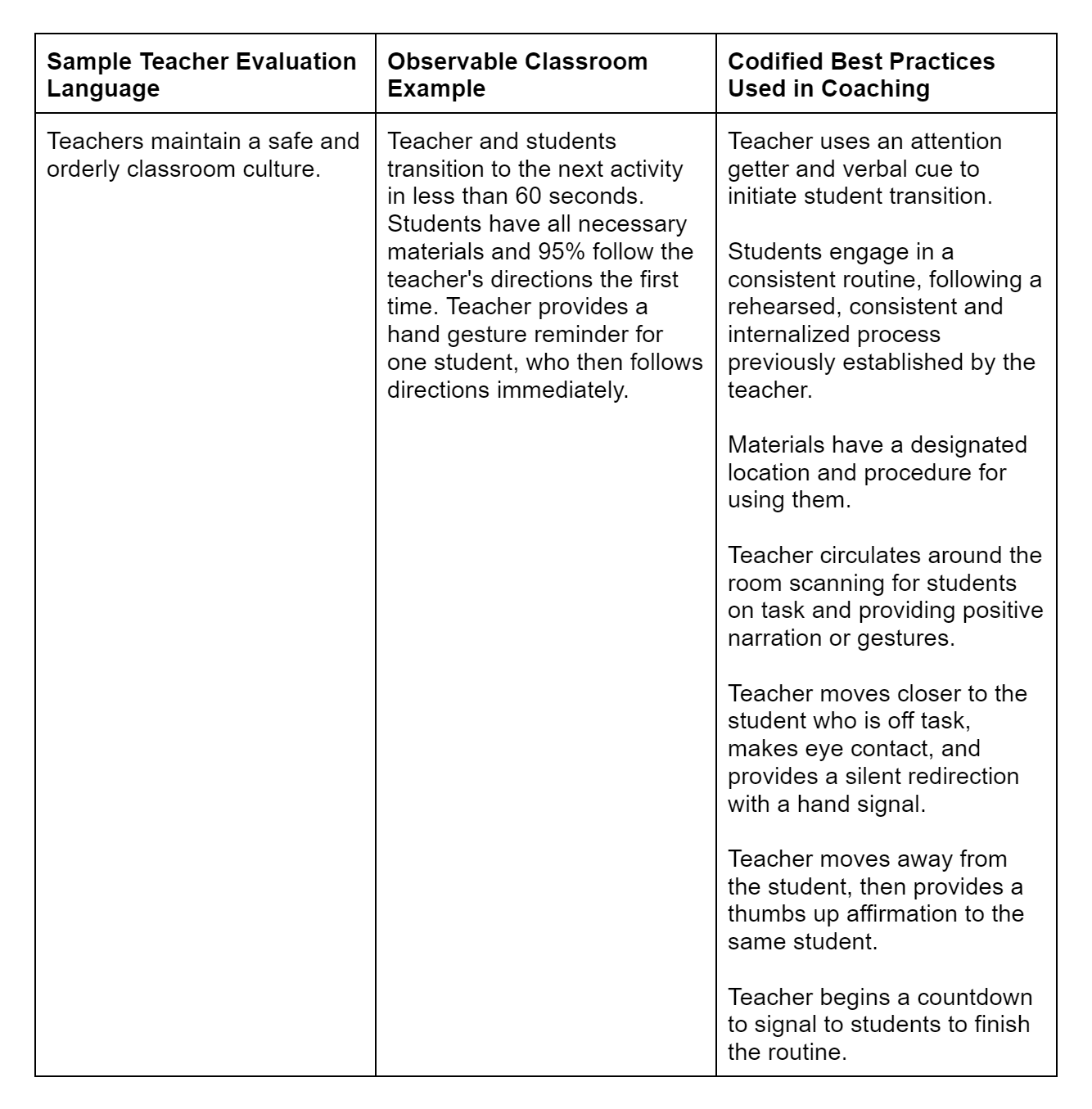5 Ways to Create a Strong Coaching Climate (Part 2/3)
In this 3 part series, guest writer Amber Brewer introduces 5 ways to build a coaching climate in your context. If you missed it, I recommend going back to start at Part 1.
2. Identify a Process & Build Common Language
Select a coaching approach which aligns with your goals and school culture. Then create systems fertile for implementation. Select a coaching approach that is clear, replicable, and as efficient as possible. Some common elements involved in various effective coaching models include:
Intentional opportunity for connection/relationship building
Observation of instruction or artifact review
Highlight of a data-based strength, success, or win
Identification of a data-based opportunity, target strategy, or revision
Review of an exemplar
Practice and reflection
Additionally, build common language and understanding across all levels of stakeholders about what coaching is and what coaching is not. Teachers engaging in coaching (and the coaches and administrators too!) should have a very clear and consistent understanding of what to expect. Think back to the basic 5 W Questions - who, what, when, where, why and how?
Who will be coaching and being coached?
What will be happening during the coaching cycle? What will be happening in the coaching meeting?
When will the observations and coaching meetings be happening?
Where will we meet for the coaching meeting?
How will the coach be observing me: digitally, live, video recording?
Why are we initiating this coaching meeting? (Helps answer unspoken staff questions like: Have I done something wrong?)
Consistently and publicly answering these questions and sharing the vision, goals, and outcomes will help lay an equitable foundation on which the coaching program can grow. When teachers work in an equitable environment, their classrooms and schools can freely transform into equitable environments for all students. Some great resources for reflecting on effective instructional coaching include The Art of Coaching by Elena Aguilar and Leverage Leadership & Get Better Faster by Paul Bambrick-Santoyo.
3. Identify & Codify Best Practice
After identifying the process and key elements in the coaching sessions, the next step is to identify and codify best practice. Teachers come from a variety of levels of experience, education, circumstances, and environments. Proceeding into coaching without a common understanding around best instructional practices is as effective as throwing a handful of darts up into the air and hoping one of them hits the dartboard, much less the bullseye.
One easy misstep here is to try to “grab and go” best practice lists or instructional frameworks used by others without first reflecting on what the school, district, or state already has in practice. Most states already have some sort of Teacher Evaluation Rubric in place. This can be an excellent place to start in the coaching journey. While it probably isn’t feasible or necessary to use the entire Teacher Evaluation Rubric for every coaching meeting, it can be a great starting point to identify the key instructional practices and areas of focus.
From there, coaches, administrators, lead/mentor teachers, and other teachers in the building can begin to identify what exemplar approaches look like, aligned to the rubric, and begin to codify them. This builds common language and expectation and reduces the apprehension around “gotchas” for teachers potentially associated with coaching due to poor implementation. Knowing what to expect liberates teachers to trust the coaching process and take the next step in their educational practice.
This approach works regardless of the instructional philosophy, methodology or style because it allows best practice to be normed within the setting. It can be especially powerful if teachers will only be engaging in coaching periodically or there are specific cultural and pedagogical focus areas across an entire school or district. For traditional school settings, some great resources for identifying and naming best practices can be Teach Like a Champion 3.0 by Doug Lemov or Get Better Faster by Paul Bambrick-Santoyo.
Additionally, identifying and codifying best practice is critically important when implementing coaching with specific subject areas and specialty expertise (especially if those weren’t coaches’ areas of expertise when in the classroom). Lean on other resources and professional standards as associated with instruction from nationally recognized organizations. One great example of this is the Process Standards for Mathematics created and published by the National Council for the Teaching of Mathematics or The Guiding Principles for Language Learning from the American Council for the Teaching of Foreign Languages.
Download Amber’s amazing Planning Template for creating a strong coaching climate, available for free through October 2022! Check it out:
From eastern North Carolina, Amber Brewer has worked in education for 10+ years serving in a variety of teaching and school leadership roles K-12, as well as an independent educational consultant & mom-prenuer. Mrs. Brewer holds a Bachelor’s degree in Hispanic Studies Education from ECU (go Pirates!), a Master's Degree in Elementary Education, and a Graduate Certificate in Executive Leadership and is a licensed NC Principal. She has worked in both the traditional public and charter school settings. Most recently she served in K-12 Public Charter as a teacher, Elementary Dean of Instruction, and subsequently Director of Curriculum and Talent Development, where she was named Administrator of the Year.
Connect with Amber:

